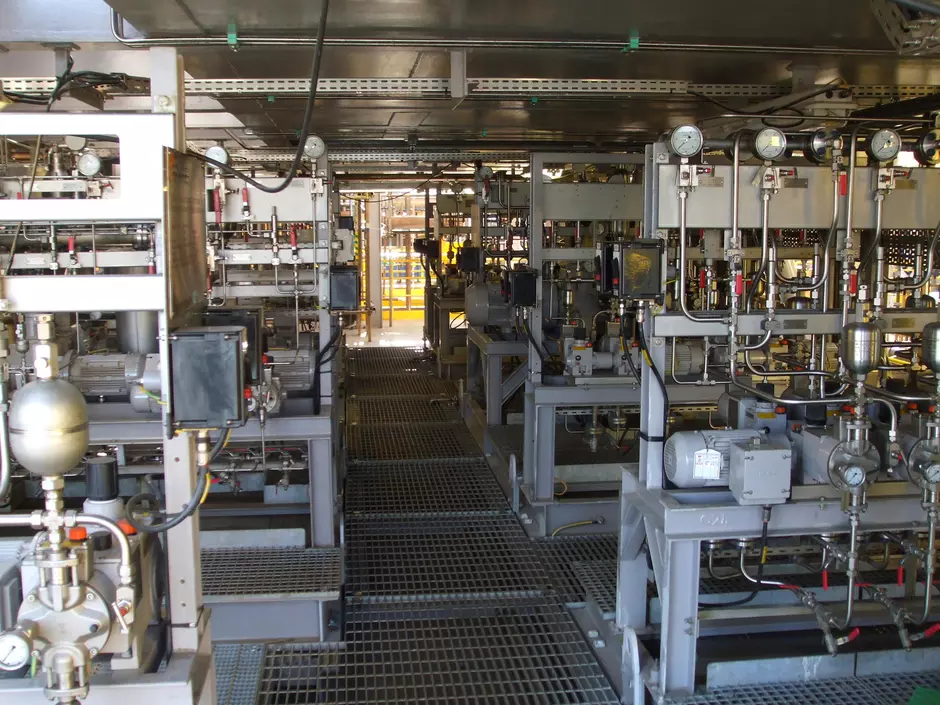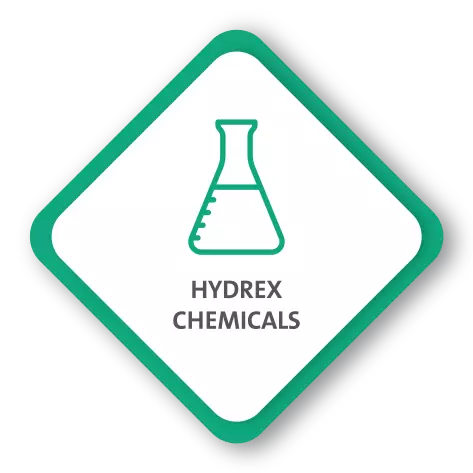As part of a turnkey project, Veolia engineers the chemical storage, dosing and injection system for the chemicals required to operate the SRP/SWRO, our vast knowledge and experience has shown that the choice and compatibility of chemicals and consumables will have a direct impact on the performance, availability and working lifetime of the SRP/SWRO and its membranes.
Storage Capacity
Typically the chemical storage tank size will be designed around the clients' logistics.
Pump Capacity
In today's industry, process demands are changing with an ever changing environment and therefore Veolia requires a versatile approach in their design. We have the capability to provide an array of injection pumps to meet the clients' requirements such as turn down capacities. Veolia can advise the most economic solution whether it to be three single headed pumps or one triple headed pump.
Materials of Construction
Process demands are an ever changing environment and therefore Veolia requires a versatile approach in their design. Veolia has the capability to provide an array of injection pumps to meet the clients' requirements such as turn down capacities. Veolia can advise the most economical solution whether it be three single headed pumps or one triple headed pump.
SRP Chemicals
Chemical dosing is an important factor in optimising the operation of the sulphate reduction plant.
Chlorine
Biological organisms, such as bacteria, are abundant in seawater and this causes fouling in process equipment. An economic solution to biological fouling is chlorination. The most economic approach is the use of electrolysis to generate sodium hypochlorite from seawater since the main components, electricity and chlorides are readily available.
Electrolysis is a method of separating bonded elements and compounds by passing an electric through them. The predominant ions in seawater are sodium (Na+1) and chloride (Cl-1) which are reacted according to the following equations:
Anode: 2 Cl-1 - 2 e-1 ------------> Cl2
Cathode: 2 Na+1 + 2 H20 +2e-1 ------------> 2 NaOH + H2
Combine: 2 NaCl + 2 H20 ------------> 2 NaOCl + 2 H2
Chlorine is provided in the form of sodium hypochlorite
Coagulant
Fouling by colloids and silt are a major cause of loss in performance of membrane separation systems. Media filters are an economic solution to removing the particles. Coagulant is dosed to improve the efficiency of the filtration system and aid removal of organic components.
Sodium bisulphite, SBS (dechlorination)
Due to the characteristics of polyamide SRP membranes, it is necessary to remove free chlorine in the feed water before passing through the membranes. Failure to do so results in hydrolysis of the membranes which irreversibly damages the membranes and radically reduces their performance. Free chlorine removal is achieved by the addition of Sodium Bisulphite. See chemical equation below.
Antiscalant
Due to the permeation of the water, the salt in the seawater becomes more concentrated. This will result in the salts exceeding their solubility limits and precipitating onto the membrane. Antiscalant dosing is therefore necessary to minimise precipitation of the sparingly soluble salts.
Antiscalant is paramount for optimising the sulphate reduction process because without antiscalant dosing, scale crystals will form rapidly and this will cause a reduction in permeate production and also increase salt passage.
Biocide
Due to the polyamide membranes' intolerance to chlorine and other oxidants, the chlorine is removed from the process and therefore there is the potential for biological growth to occur downstream from where the chlorine is removed. Biological growth results in increased cleaning and maintenance cost, poor product water quality and therefore element deterioration. Biofouling is controlled by the injection of non-oxidizing biocides into the SRP feed stream.
Sodium bisulphite, SBS (oxygen scavenger)
Primary oxygen removal is achieved by a vacuum Deaerator. Further oxygen removal is achieved by the addition of an oxygen scavenger downstream of the deaeration vessel. De-oxygenation of the water is required to reduce corrosion and aerobic bacterial growth. See chemical equation below.
2NaHSO3 + O2 = 2NaHSO4
Antifoam
Antifoam is dosed upstream of the deaerator to minimise the effect of foaming in the deaerator.


Veolia has the experience and capability to implement a chemical & consumables service solution. Find out more about our HydrexTM chemicals range and consumables to maintain maximum capacity for your plant


